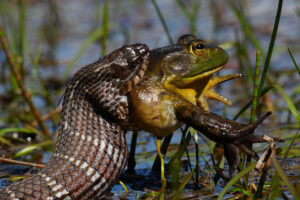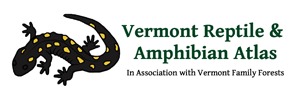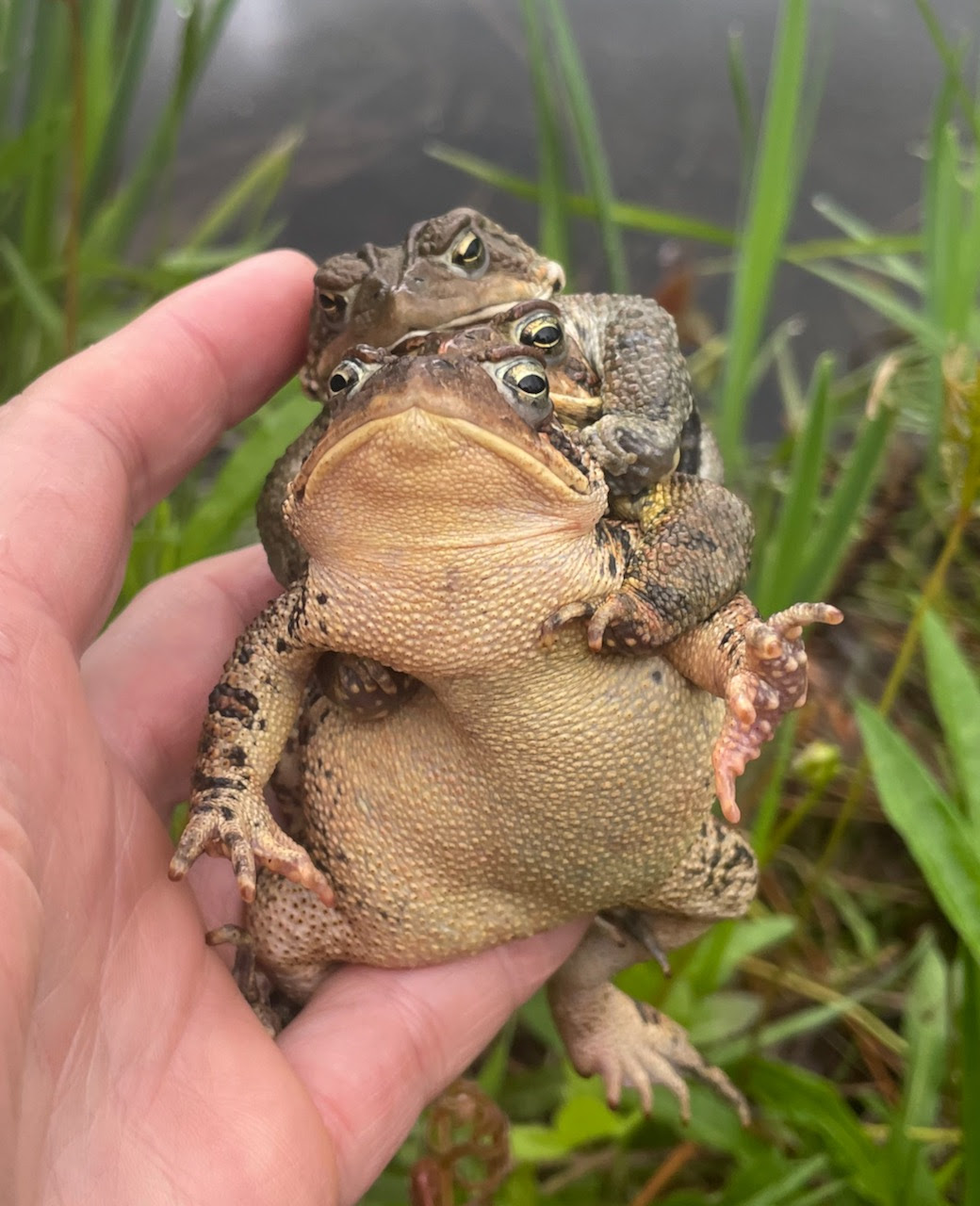
Herp Update: American Toads & Gray Treefrogs – May 22, 2024
Recent Herp Activity
We have been receiving a flood of reports lately. I suspect it has to do with the amount of recent press coverage we have had. We have been on local television, VPR, and Vermont Digger this spring getting the herp word out and people have responded with reports. Thanks.
As a result of the warm and wet weather, many of the recent reports have been of American Toads calling and laying eggs. In addition, Gray Treefrogs have also been calling and laying eggs. Kate Kelly counted more than 30 Gray Treefrog egg films in one pond in West Haven last week. I will attach a photo below. It was interesting that the Gray Treefrog eggs Kate observed were clustered in one area of the pond. This is similar to the behavior of Wood Frogs but we had not noticed it before.
We have updated photos of American Toads from all towns in Vermont except Baltimore, Cavendish, Irasburg, Landgrove, Ludlow, and Pittsfield. If you live in or visit any of these six towns, please do take a photo of the next American Toad you see and send it our way. We don’t need reports of American Toads from any other towns.
Photo Credits and Info
The main reason we ask for photos of the herps you report is so that we can add them to our database as proof that you indeed identified the reported herp correctly. As long as the photos show some of the key field marks of the species, they don’t have to be great photos. That said, we have received some really excellent and interesting photos over the past few weeks. Check them out below.
The first photo below was taken by Kelly Halloran. It is included so that you can see what a Gray Treefrog egg mass looks like. They deposit a small loose film of eggs on the surface of the water and near the edge of a pond. The film is only a 2-3 inches in diameter and from our records in Vermont most films contain between 15 and 22 eggs. By this time of year, Wood Frog, Spotted Salamander, Blue-spotted Salamander, and Jefferson Salamander eggs have already hatched. The remains of Spotted Salamander egg masses can still be seen, but most other early spring egg-masses have completely disintegrated.
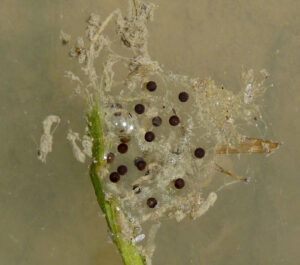
The photo below was taken by Cindy Mowry. It shows the egg strings laid by American Toads. Check out the amazing number of egg strings in the background of the photo. They must contain literally millions of eggs. It must have been quite a party, with dozens of female toads in attendance. The photo also shows the size and coloration differences of male and female toads: males mostly solid-colored, and females more colorful and larger.
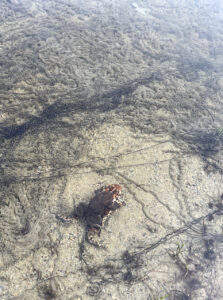
The next photo was taken by Patsy Fortney. It clearly shows the two strings of eggs being deposited by the female American Toad. One string is deposited from each oviduct. Notice that like other amphibian eggs the gelatinous material around each egg expands soon after it comes in contact with the water. The fresh egg strings are just thin and black while the older ones are much thicker, more opaque, and they are starting to get lightly dusted with sediment. Both toads look like they are concentrating pretty hard.

The photo below was taken by Elizabeth Daut. It shows two male American Toads in amplexus with a female. The expressions are fun to interpret. The topmost male looks quite determined, while the female on the bottom looks quite anxious.
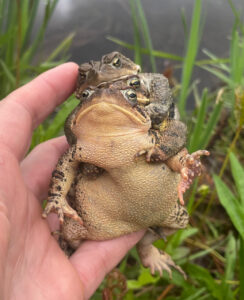
The final photo below was taken by Mark Krautheim. It shows a Common Watersnake eating a large male American Bullfrog. The bullfrog looks remarkably content for being eaten alive. American Bullfrogs are just beginning to call. I have only heard one call so far this spring. Bullfrogs are not common in Vermont. Please photograph or record and report any American Bullfrogs you see or hear.
